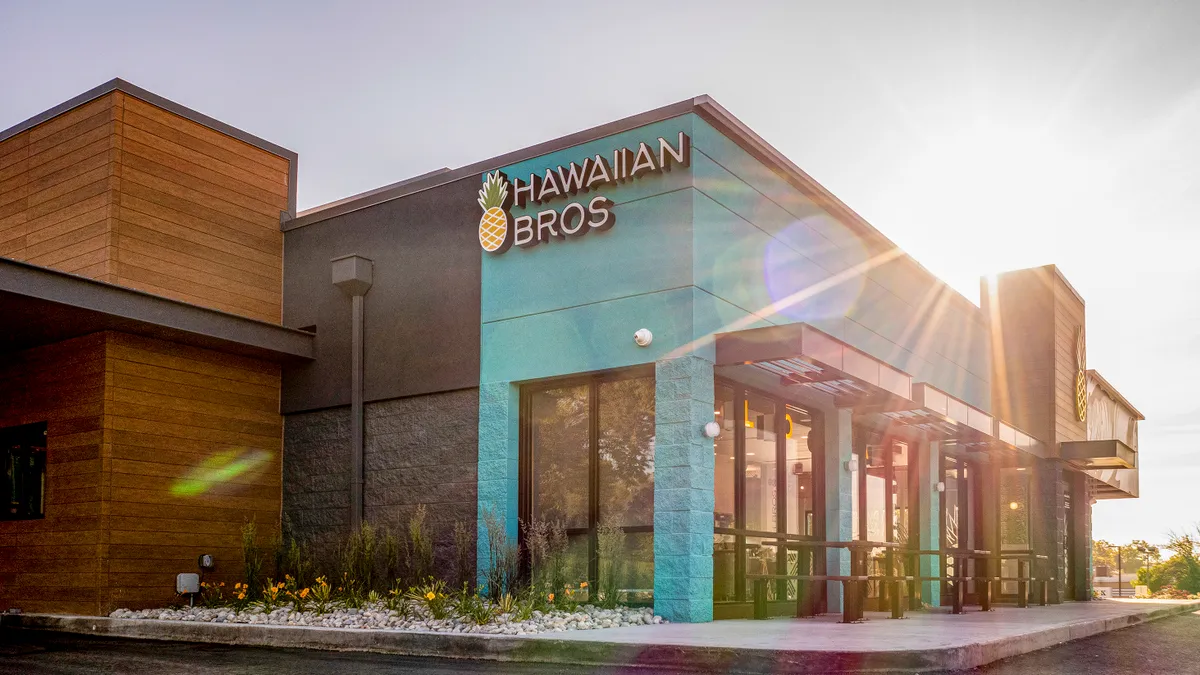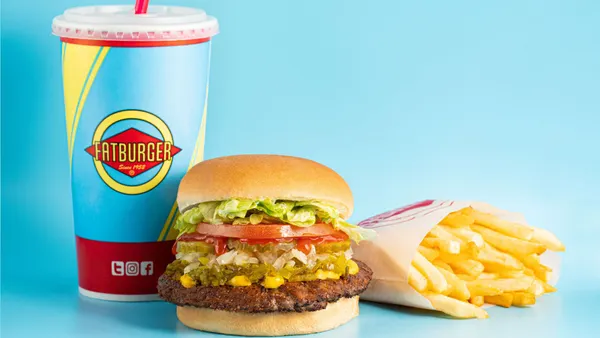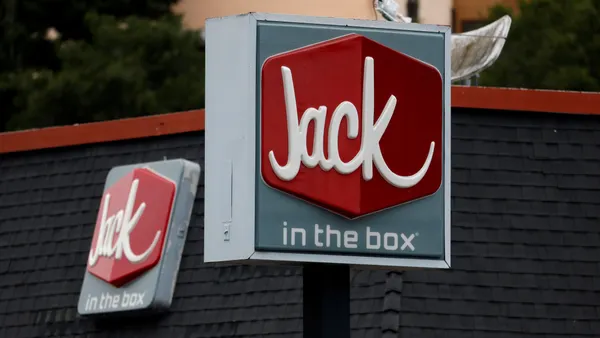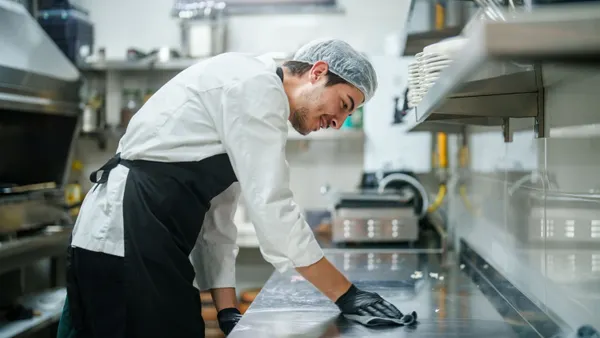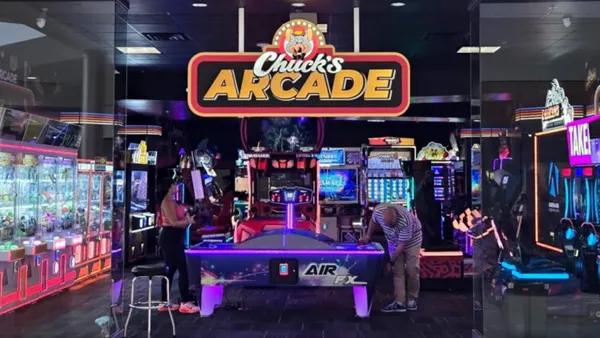This is the second article in a series exploring strategies chains are deploying to overcome challenges as they expand their drive-thru channels.
Shortly after Hawaiian Bros opened a third location in Overland Park, Kansas, co-founder Cameron McNie realized the drive-thru was creating big problems. While opening sales were double that of the chain’s previous two restaurants, which don’t have drive-thrus, the parking lot was a gridlock.
“We had to do some serious thinking on how [to] improve service. Not only do we need to service 30 cars that are in the drive-thru right now better than what we’re doing, but what about all the cars driving by right now and see[ing] this?” McNie said.
Optimizing the drive-thru experience was critical for the future of the business. Out of all of Hawaiian Bros’ 35 brick-and-mortar stores, only two don’t have drive-thrus, but those locations offer curbside service, which still allows customers to collect their food without leaving the car. Drive-thru represents over 50% of sales at the locations that offer it, McNie said. When combining delivery and curbside sales, off-premise represents 80% of Hawaiian Bros’ business.
To maximize off-premise efficiency and sales potential, the company redesigned its kitchen to include a dedicated service line for the drive-thru. Hawaiian Bros also retooled its drive-thru window service, so drinks and Dole soft-serve are now provided via the first window and food is given through the second window.
The company also moved some staff outdoors to take orders and payments from customers in the drive-thru line, setting a window service time goal of 30 seconds. About two to four staff members can take these orders, depending on the store, volume, weather and other factors.
Hawaiian Bros is far from the only restaurant chain boosting drive-thru speed through redesigns, which help businesses keep apace with diner demand. Drive-thru orders were up 20% from February 2020 to February 2022, according to The NPD Group.
Auntie Anne’s, which opened its first combination drive-thru with Jamba last year, continues to assess its model to optimize performance. Schlotzsky’s, which created two drive-thru-focused prototypes, is exploring technology that can improve service times. Taco Bell franchisee Diversified Restaurant Group developed a version of the Go Mobile store prototype that uses two separate drive-thru lanes to reduce delivery pickup times.
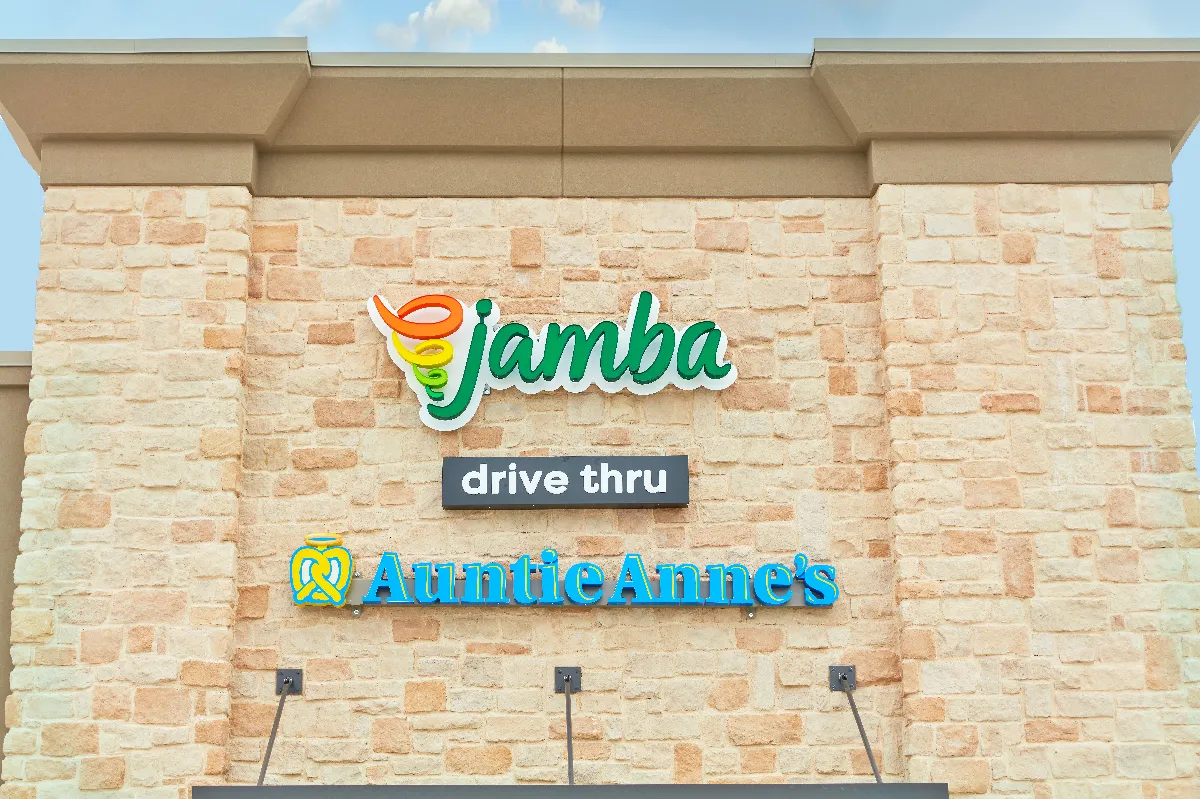
Fixing drive-thru bottlenecks
After opening the first Auntie Anne’s/Jamba drive-thru location in Wylie, Texas, in 2021, teams from Auntie Anne’s, Jamba and parent company Focus Brands went to headquarters in Atlanta to talk about what worked and what challenges persisted, said Alisa Gmelich, chief development officer at Auntie Anne’s. That meeting led to several design revisions, from drive-thru setup to equipment and fixtures designed to boost speed and enable staff to move through kitchens more easily.
One of the biggest adjustments that Auntie Anne’s made was creating a more efficient warming station for its pretzels, which take 30 minutes to make and require a backlog to accommodate customers. Initially, the chain’s warming station was situated at the front of the store, where staff would pick up pretzels to take back to the drive-thru. Auntie Anne’s added an additional warming station by the drive-thru to get pretzels out the window quicker, Gmelich said.
The chain also added an organizer by the drive-thru window that allows staff to more easily access things, such as forks, napkins and sauce packets to complete an order, she said.
Auntie Anne’s also assessed the best spot for the drive-thru window at future locations. If the window is closer to the end of the building, this placement allows more space between where customers order and where they pay and collect their food, giving staff more time to ensure orders are ready to go, Gmelich said.
“We are looking for streetside locations to represent a much larger percentage of our portfolio,” Gmelich said. “We really see Auntie Anne's five-year vision [as one where] we want to continue to build off of our strength, which is being that amazing, impulse-driven brand [at] malls, airports, entertainment venues, boardwalks, travel centers, and then at the same time, really build out this streetside component with drive-thrus where Auntie Anne's is a destination.”
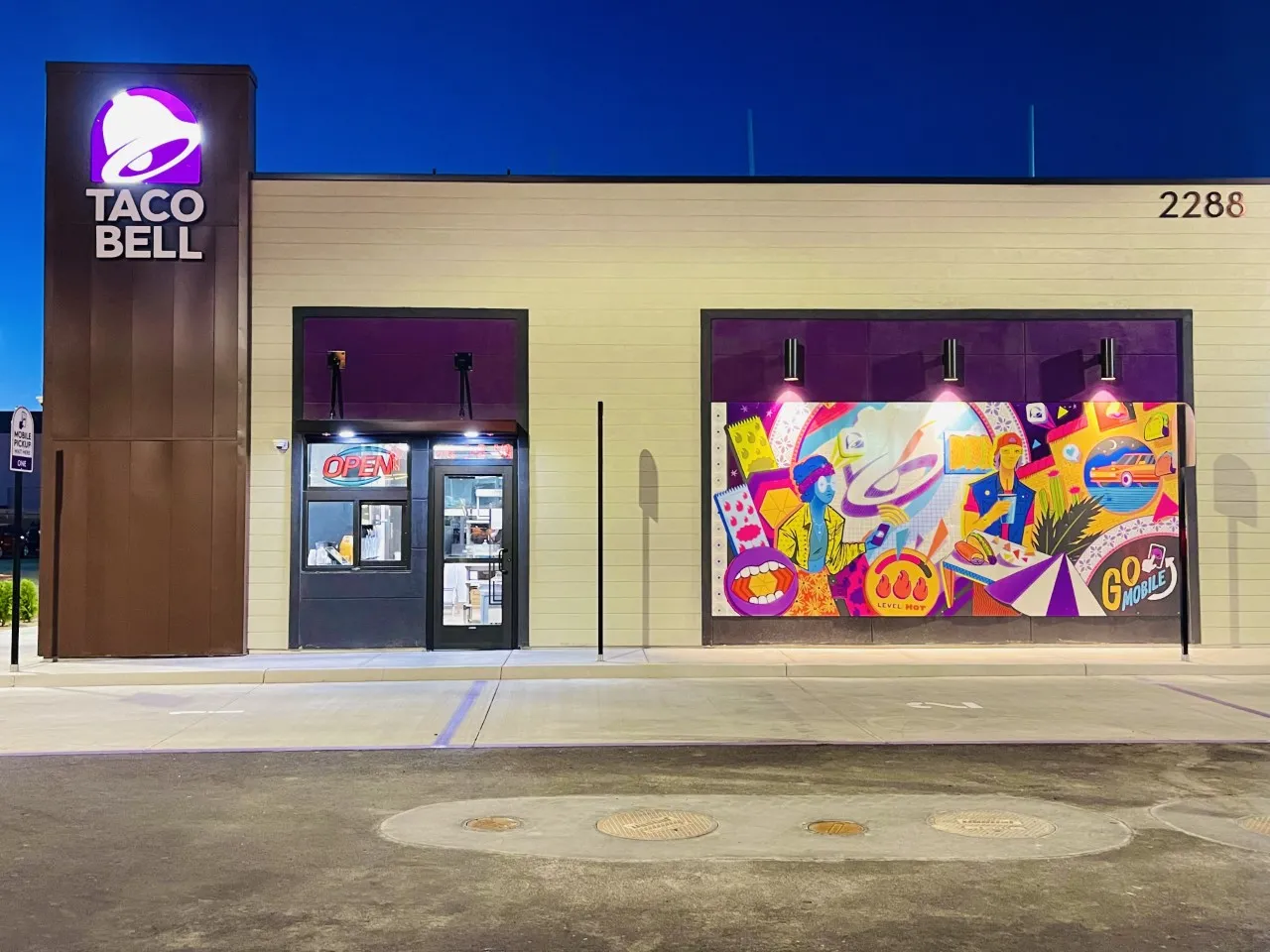
Developing prototypes that boost speed
Other restaurant chains have turned to drive-thru prototypes that are not only easier to build but also help increase speed of service.
Taco Bell franchisee Diversified Restaurant Group opened its first Go Mobile store in Las Vegas during the summer. Taco Bell has about 80 Go Mobile units across its system, the company wrote in an email to Restaurant Dive.
Taco Bell’s company-owned Go Mobile stores have two drive-thru tracks. One is for traditional window ordering, and the other is for mobile pickup, but the lanes are consolidated into one line during pickup.
However, Diversified’s Go Mobile store keeps the lines separate through the whole process. Using two drive-thru lines helps delivery drivers pick up orders faster and takes pressure off of traditional drive-thru lines, since delivery orders tend to be almost double the size of a standard order, said Todd Kelly, co-chief operating officer at Diversified Restaurant Group.
Pickup times for Diversified’s mobile orders hover around less than a minute compared to five minutes for traditional drive-thru fulfillment, Kelly said. The company is using geofencing that triggers teams to make sure that an order is ready versus being told to do so via the drive-thru speaker. Diversified is looking into remodels that add pickup windows in areas where a second drive-thru lane isn’t possible, and putting in another lane where there is space, he said.
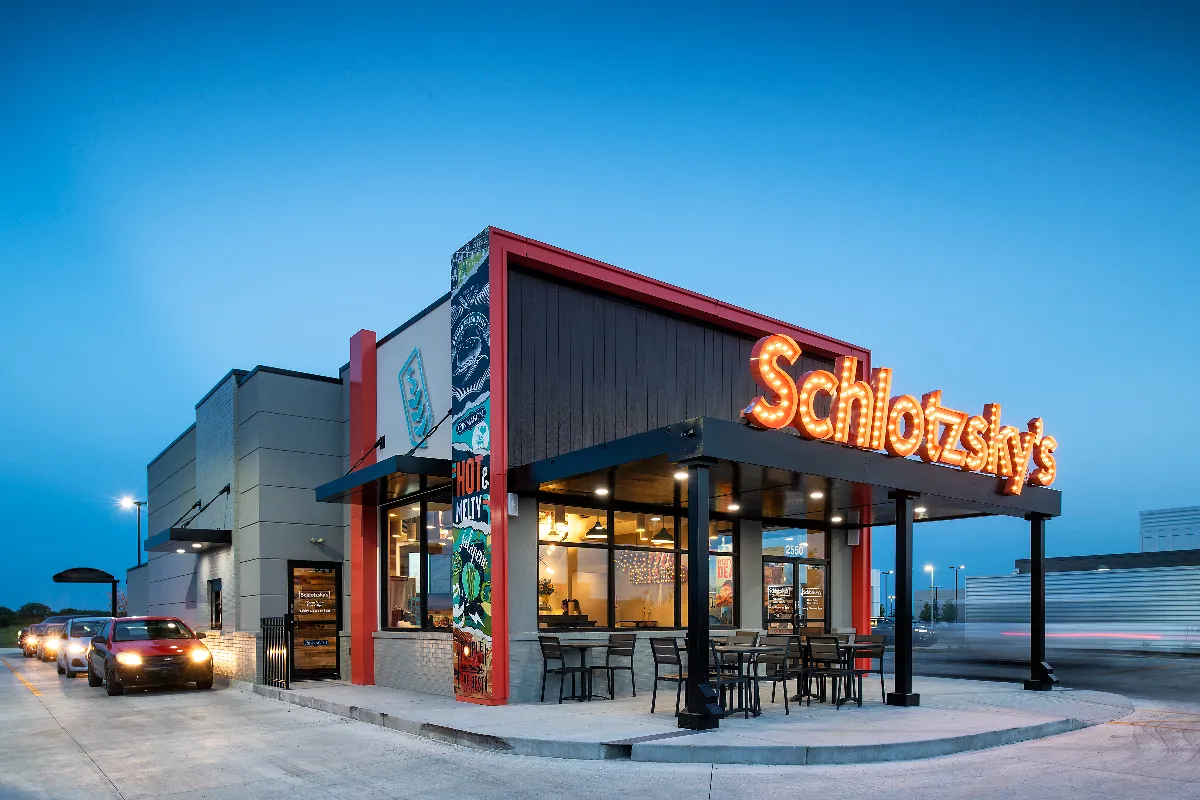
Even before the pandemic started, Schlotzsky’s was evaluating how its drive-thrus were meeting consumer demands, said Shelley Harris, former interim chief brand officer at Schlotzsky's and current restaurant category president at Focus Brands.
Schlotzsky’s has developed two prototypes to improve the drive-thru experience. One store is 1,000 square feet with no interior seating, and offers a double drive-thru lane with a pickup window. The other is 1,800 square feet with a small dining room, as well as a double drive-thru.
While customer understanding of a double-drive thru has been somewhat intuitive, there has been some confusion over the order-ahead pickup window.
“The consumer is used to what a traditional drive-thru lane is, but when we're now saying ‘order-ahead pickup window,’ the messaging in terms of the signage, and what lane is dedicated to what pickup mode, is definitely something that we are continuing to work through,” Harris said.
At its prototype in Oklahoma City, Schlotzsky’s is already redesigning some of the striping in the parking lot and figuring out what signage to place above each of those lanes to make it clearer to consumers where they need to go.
Even with these new prototypes, Schlotzsky’s wants to improve its drive-thru speed, which comes in at over five minutes across its entire system and just under five minutes at its Oklahoma City prototype, according to company data. That could mean looking at ways diners can pay at the menu board, but adding more technology requires more assessment of potential impact on labor and sales. It’s important to assess where the true bottlenecks are to figure out what is needed to solve drive-thru issues, Harris said.
“I think where it becomes even more important [is when] you start to look at the technology aspects,” Harris said. “You have to have two people that can take orders at the same time. You have to have the right staffing on your line to push out orders faster. And figuring out the pay technology is also a component of it.”
Correction: A previous version of this article misspelled Shelley Harris’s name and misstated her job title. She is the restaurant category president for Focus Brands.



